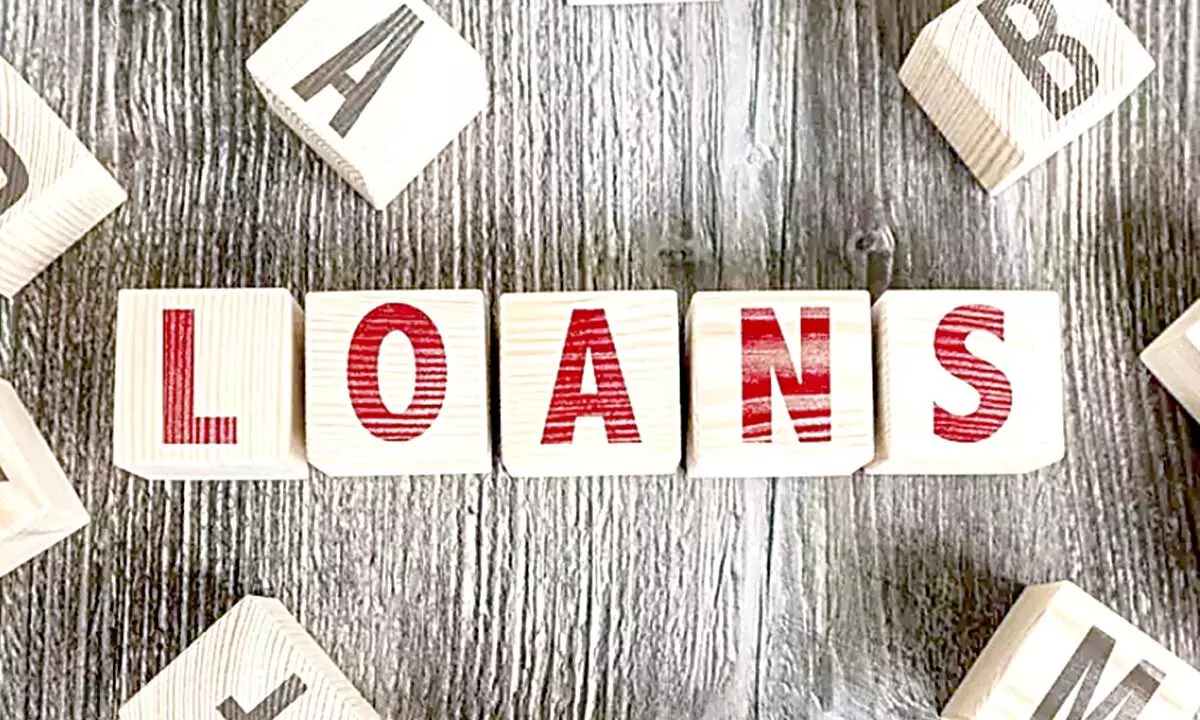Loan growth back on track, despite high interest rates
Personal, NBFC, housing, services and agriculture loans have surpassed those by industry
image for illustrative purpose

RBI is caught in an inflation control versus GDP growth dilemma. The economy expanded 4.4 per cent year on year in the three months to December’s low at 6.3 per cent in the three months from September. Even though we would have expected more private investments during Covid-19 as interest rates were very low, that did not transpire
There are strong trends of reversal in loan growth from cyclical highs in spite of high interest rate, according to RBI estimates.
A release from the central bank points out “after a strong period of strong loan growth, we are seeing signs of a reversal from cyclical highs. Nearly all the key markets by geography (states or regions) are showing a similar trend”.
Meanwhile a Kotak report points that as a result of “the increase in interest rates by 250 basis points so far in the current fiscal that we are witnessing currently has little to do with domestic credit growth. They are to address inflation and exchange-related issues. We factor in lower credit costs for FY2024-25E.”.
Even in lower ticket sizes also a similar pattern prevails. In fact, there are early signs of a reversal which are visible even within the nature of loans, including those pertaining to working capital and private and public banks are showing similar trends, it adds.
The RBI release shows that loan growth was healthy at 17 per cent yoy with nearly similar performance across (metro, urban, semi-urban and rural) markets.
Talking to Bizz Buzz, Shiva Kumar, former MD of SBBJ, says, “It is not just restricted to Q3 FY22. All through the year, bank lending has leaned away from industry to retail and NBFCs. Up to this February, banks' loan book has gone up by Rs 15.6 lakh crore in 11 months. But the share of industry is only Rs 1.4 lakh crore.”
Segments like personal loans (Rs four lakh crore), NBFCs (Rs 2.9 lakh crore), housing (Rs 2.3 lakh crore), services (Rs 2.3 lakh crore) and agriculture (Rs 1.9 lakh crore) have grown higher than those by industry. This is reflective of services sector having a larger share in GDP while manufacturing is still taking time to grow at a faster pace in the country, he said.
According to Kumar, “Actually, NBFCs have been given more money by banks than the industry. But then the NBFCs also lend to industry. Overall credit growth for the year stays healthy.”
M. Narendra, former CMD of IOB, says, “After the COVID 19, with the pent up demand and a substantial recovery of Indian economy, credit growth of Indian SCB’s has peaked to 17 per cent as in December. The inflation was hovering at 6.44 per cent in February, which is still above the RBI tolerance limit of four per cent and upper limit of six per cent.”
With the Repo rates increase, there has been transmission in lending rates thereby borrowing rates are going up both for debt and lending. This will naturally make cost of borrowing high. Otherwise, banks have also started enhancing their deposit rates to mop up resources proportionate to the credit growth as deposit growth is hovering at nine per cent, which is considerably lower than the credit growth, he said.
RBI is caught in an inflation control versus GDP growth dilemma. The economy expanded 4.4 per cent year on year in the three months to December’s low at 6.3 per cent in the three months from September. With global slowdown, slowing exports and imports and impact of interest rates will have an impact on economic activities and consequent demand. Even though we would have expected more private investments during Covid-19 as interest rates were very low, that did not transpire.
It is likely that with the current cost of debt and lending will go up and could impact private spending and consumption and new private investments will likely be slow or deferred. Even though capacity utilisation has reached the pre-Covid level, it has not reached the expected peak, thereby reducing the demand for fresh working capital by corporates.
According to Narendra, “It is against this background that there is a likelihood of moderation in the credit demand, which has been covered in the report.”
Meanwhile, March saw the second highest GST collection of Rs 1.6 lakh crore. GST gross collections for 2022-23 are 22 per cent higher than 2021-22’s Rs 18.1 lakh crore reflecting an average gross monthly collection of almost Rs 1.51 lakh crore.
Hence, this may be an indication that business activities must have picked up in subsequent months leading to March. For the current financial year, India’s GDP growth will witness six per cent to 6.8 per cent depending on the trajectory of economic and political developments globally, states the Ministry of Finance Economic Survey 2022-23. However India’s GDP growth will be much higher than the growth in western and European nations. Therefore with a slight moderation in credit growth, one can expect reasonable credit growth in this financial year also.

